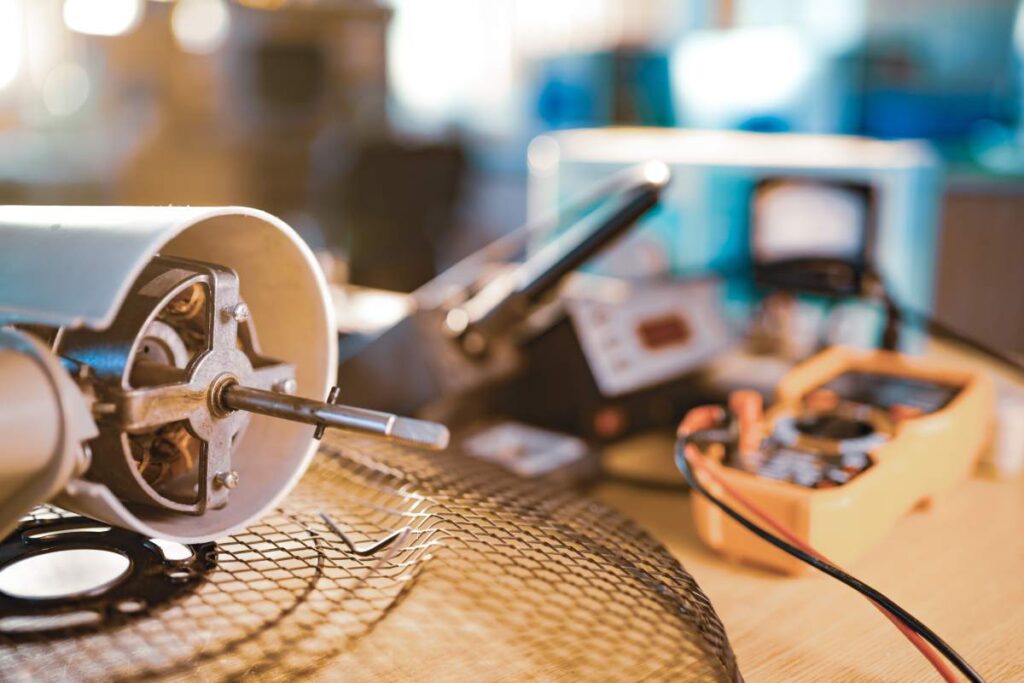In these days of upcycling and cost-cutting, you might be considering purchasing second-hand equipment for your workplace or to build a garage. That’s potentially a great thing for the environment, and it could save you money as well, but are you compromising the safety of your workplace when you purchase second-hand goods?
Good news – you can safely use second-hand equipment in the workplace, but you need to be aware of the risks and responsibilities and make sure you follow the correct safety procedures to ensure that the experience is good for the planet, good for your pocket and safe for your employees. Here are some key things that you need to know.
Safety is your responsibility
When you purchase second-hand equipment, the responsibility for the electrical safety of that equipment passes to you. It doesn’t matter what assurances the vendor gives you, once you have purchased the item you are responsible for the appliance and that includes responsibility for its safe operation. There are two important points to consider in terms of your responsibility:
- You don’t know the history of the appliance
- You only have the purchaser’s word that it has been working correctly
And while in most situations you can test an appliance before you buy it, that isn’t always the case and even if you have tested its use, chronic problems aren’t always obvious. So, how can you purchase second-hand goods safely?

Ask about the history of the item.
The appliance may have a service and warranty history. If the appliance represents a significant monetary investment and is an appliance that should have a service history, ask for documentation of servicing and a copy of the warranty terms.
Conduct a visual inspection of the item.
Inspect the appliance carefully and if there are any signs of visible damage, reconsider your purchase. Don’t purchase any item with a frayed or damaged cord, a damaged plug or visible dings and dents. And if there is any discolouration of the plastic or outer covering of the appliance, you’re best to bypass it and look for another item. Because discolouration is an indicator that the appliance has aged, and ageing can also be happening inside the appliance (out of sight) at the same time. Discolouration can be an indicator that the appliance is overheating which also suggests that the insulation within the appliance isn’t working as it should.
Don’t underestimate the importance of the visual inspection as over 90% of appliance defects are detectable by visual inspection according to the Australian/New Zealand safety standard AS/NZ 3760:2010.
This won’t work in every situation, but if the appliance you’re looking at represents a significant investment, see if you can negotiate with the purchaser to have it tested and tagged. It’s best if you can organise this yourself, so you can have complete confidence in the person who tests the appliance. But testing and tagging is really the only way you can know with confidence that the electrical equipment you’re buying is safe to use.
An alternative approach would be to negotiate a return of the appliance (and a refund) it fails testing and tagging after purchase and therefore isn’t safe to use. If you take this approach, make sure that all terms are clearly outlined in writing and both parties know (and agree) on the timeframe in which the appliance needs to be tested.
Who’s responsible for the safety of the appliance?
This is really the root of the issue. If you’re purchasing a second-hand electrical appliance or equipment, the onus is on you (as the purchaser) to make sure that the appliance is safe to use. Many people are surprised by this – they assume that you can’t sell an appliance second-hand if it’s not safe to use. But we exist in a buyer-beware environment. It’s your responsibility to do your homework and the due diligence on the appliance – it’s not the seller’s responsibility. We should to PAT testing
So, you’ve bought a second-hand appliance, now what?
If you’ve already had the appliance tested and tagged before you purchased it (or as a condition of purchase) then as long as it has passed the test and been tagged with a current tag, you can start using it right away. But if it hasn’t been tested and tagged, that’s the first thing you need to do. It needs to be treated like any other appliance in your workplace and it shouldn’t be used unless you know it is electrically safe.




